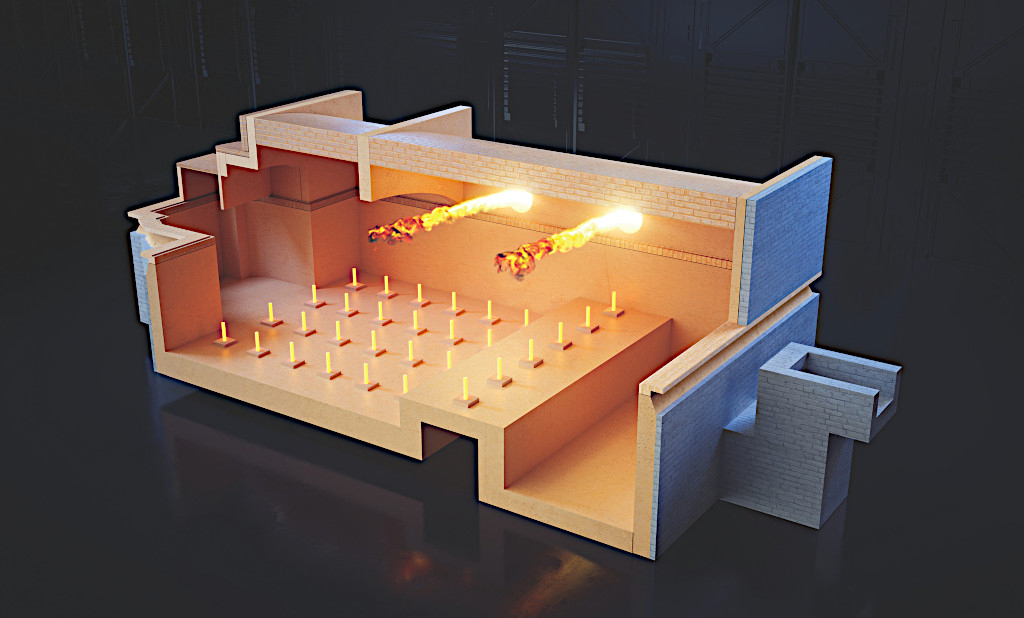The materials used for refractory materials and bricks in glass kilns are diverse, mainly including:
- Clay bricks: low porosity series, mostly between 11-17; ordinary clay bricks
- Mullite: sintered, fused, synthetic, and sillimanite
- Zirconia: zircon
- Alkaline: magnesia bricks, magnesia zirconia, magnesia alumina, magnesia alumina spinel, and silica bricks
- Insulation materials: lightweight silica bricks, lightweight magnesia bricks, and other insulation bricks
- Castable products: more irregular in shape and larger in volume, mainly made of clay, sillimanite, alumina, zircon mullite, AZS, etc.
- Amorphous products: refractory mud, castables, ramming materials, sealing materials, and heat repairing materials.
Glass furnaces are a crucial component of glass manufacturing plants, as they are responsible for melting raw materials and producing molten glass. There are various types of glass furnaces, each with its unique features and benefits. Understanding the classification of glass furnaces can help manufacturers choose the most suitable option for their specific needs.
A. According to the products manufactured, they are mainly divided into:
- Flat glass kilns;
- Daily-use glass kilns.
B. According to the forming methods, they are mainly divided into:
- Float glass kilns;
- Horizontal drawing glass kilns;
- Vertical drawing glass kilns.
C. According to the heat source used for melting glass, they can be divided into:
- Flame kilns, which use fuel as the heat source;
- Electric kilns, which use electricity as the heat source;
- Flame-electric kilns, which mainly use fuel and supplement with electricity.
D. According to the continuity of the melting process, they are mainly divided into:
- Intermittent kilns, in which the different stages of glass melting take place at the same location in the kiln but at different times, and the temperature of the kiln is variable;
- Continuous kilns, in which the different stages of glass melting take place at different locations in the kiln at the same time, and the temperature of the kiln is stable.
E. According to the equipment for recovering flue gas waste heat, they are mainly divided into:
- Heat storage kilns, which recover flue gas waste heat by heat storage;
- Heat exchange kilns, which recover flue gas waste heat by heat exchange.
F. According to the direction of flame flow inside the kiln, they are mainly divided into:
- Horizontal flame kilns, in which the flame flows horizontally in the kiln, perpendicular to the direction of glass flow.
- Horseshoe flame kilns, in which the flame flows in a horseshoe shape, mainly used in medium and small glass kilns;
- Vertical flame kilns, in which the flame flows vertically in the kiln, parallel to the direction of glass flow.


